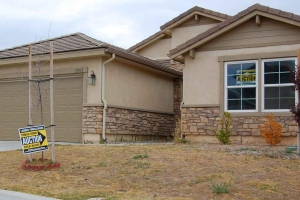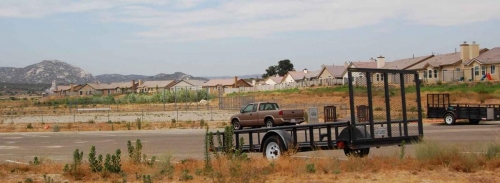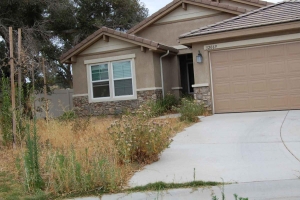‘Downzoning’ is actually ‘upzoning’ when it comes to property values
 By Billie Jo Jannen
By Billie Jo Jannen
October 15, 2010 (San Diego’s East County) -- The debate over the “downzoning” provisions of the general plan update that is about to be voted on by the board of supervisors has heated up. At issue is quality of life and property values in the backcountry versus the “rights” of developers to build where, when and how much they please. We have been told again and again that our “property rights” are being taken away and our land values are going to tank.
There is abundant proof that there is almost no truth to this claim. We have only to read the studies done in communities that have opted for open space preservation of their rural lands.
For instance, Oregon has become the poster child for downzoning and is the place that downzone opponents love to point to when they talk about the evils of this practice. However, real estate professionals in the region tell another story. According to analyst Ashley Lichty, in “Home Value Trends in Oregon” (http://articles.webraydian.com/article2355-Home_Value_Trends_in_Oregon.html):
“The state of Oregon is fast becoming one of the real estate hot spots of the nation,” Lichty writes. “More and more people are relocating to Oregon, especially Californians, according to statistics by 3 national moving companies. It's not hard to see why: with a population creeping up on 4 million, the cost of living is fairly low, unemployment rates are decreasing and Oregon has plenty of attractions to offer to new initiates. A rise in economy and job growth is a sure fire way to keep a real estate market stable and continue to have steadily increasing home value prices, while a big tourism industry is a great way to continually attract potential residents to a state.”
In short, quality of life and good planning are better supporters of real estate values than high-density construction.
Nowhere is the wisdom of focusing on preservation and local economic planning better illustrated than in the remote, end-of-the-road communities in Oregon – the ones you would expect to find in complete decline, according to opponents of the general plan update. Wallowa County, located in the northeastern corner of Oregon, has been battered by destruction of the timber industry and has the same unemployment rate that we do. It has made yeoman’s efforts in economic planning, education of local businesspeople and business support services. The county decided to focus on its strengths and has preserved open space and wildlife with a vigor seldom seen in California communities.
The result is a region that has weathered the storms of the past five years with the most minimal of impacts. For instance, the two-year drop in average home prices in Wallowa County (Sept. 2008 to Sept. 2010) is only $5,000 – from $225,000 down to $220,000. The total percent change, based on actual home sales, is -3 percent:
http://www.zillow.com/local-info/OR-Wallowa-County-home-value/r_2068/
 Compare this to the East County community of Campo, where developers recently succeeded in placing a Santee-style neighborhood of 200-plus homes in the middle of town. The two-year drop in Campo (Sept. 2008 to Sept. 2010) is $67,000 – from $236,000 to $169,000. The total percent change, based on actual sales, is -28 percent
Compare this to the East County community of Campo, where developers recently succeeded in placing a Santee-style neighborhood of 200-plus homes in the middle of town. The two-year drop in Campo (Sept. 2008 to Sept. 2010) is $67,000 – from $236,000 to $169,000. The total percent change, based on actual sales, is -28 percent
http://www.zillow.com/local-info/CA-91906-home-value/r_96542/
Metro areas offer an even more telling comparison. According to HousingTracker.net, the median home price in San Diego has fallen from $528,540 in Oct. 2006 to $387,000 in Oct. 2010. In Portland, Ore., the median home price was $348,834. Two years later, it is $255,000. Prices in both cities plummeted by an identical 27 percent in those two years.
Is it coincidental that the places that lost the most value are the places that have lost their rural character and quality-of-life amenities? I don’t think so and other researchers tend to agree, including the U.S. Treasury Department, which requires that valuation of a conservation easement take into account the resulting increases in the value of other property owned by the easement donor because the conservation easement ensures that the neighboring property will be forever bordered by parkland (www.tpl.org).
A Minneapolis study, “The effect of open space on single-family, residential home property values” by Soren Anderson, concluded that being adjacent to open space added $40,000 to the average value of area homes (www.msu.edu).
A local study “Economic and Fiscal Analysis of Proposed County of San Diego 2009 General Plan Update,” by Rea & Parker Research and Barnett Consulting, quoted studies of downzoned regions in Oregon, Washington, Idaho, New Jersey and Maryland. These studies found that, in most cases, property values either did not change, or went up. The paper went on to quote a study by Georgetown University (Portland, Oregon), which found that positive amenities such as natural beauty, protection from encroachment and exclusivity of supply outweighed the potential for development in defining land values.
Ironically, the people who prepared the San Diego paper disdained the results of the studies it quoted, shrugging them off as “illogical,” then proceeded to claim that downzoning rural lands would result in an economic disaster of Biblical proportions. This report was tendered to the planning commission to oppose the general plan update and a majority of the commissioners bought into it.
Talk about illogical.
 Even more illogical is that people who patently ignore the economic reality of development impacts in favor of promoting the minority interests of a few developers could be so successful in selling this snake oil to the public when every economic study done on this issue gives back the same result: Downzoning is actually upzoning, when it comes to raising property values.
Even more illogical is that people who patently ignore the economic reality of development impacts in favor of promoting the minority interests of a few developers could be so successful in selling this snake oil to the public when every economic study done on this issue gives back the same result: Downzoning is actually upzoning, when it comes to raising property values.
The real property rights issue here is the value of homes and land throughout the county, and not the narrow interests of real estate speculators whose only focus is how many houses they can squeeze out of an acre of land.
My economic interest, and that of my neighbors in the backcountry, lies in property values that remain stable and positive. And that won’t happen if the land speculators and developers win this debate.
Billie Jo Jannen is a property owner and resident of Campo for 23 years and has written and edited rural news for 24 years. Her children and grandchildren also live in Campo. Reach her via email at jannen@inbox.com. The views expressed in this column reflect the views of its author and do not necessarily reflect the views of East County Magazine.








Recent comments